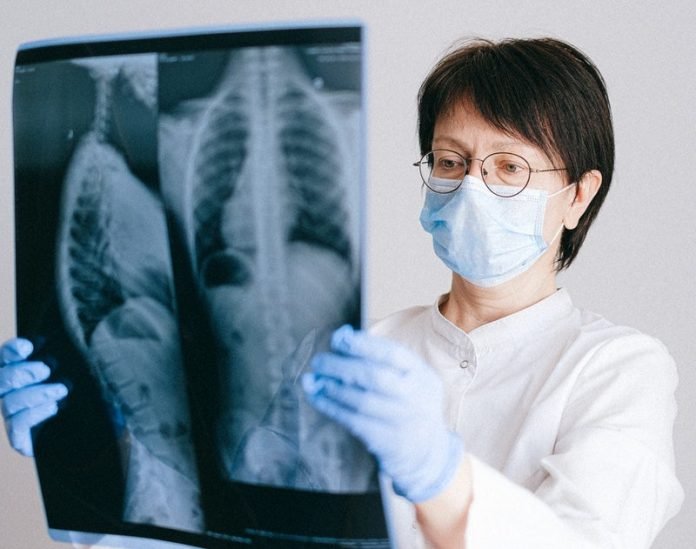
In a new study from Columbia University, researchers provided the most detailed picture yet of SARS-CoV-2 infection in the lung, revealing mechanisms that result in lethal COVID-19.
They found that in patients who died of the infection, COVID-19 unleashed a detrimental trifecta of runaway inflammation, direct destruction and impaired regeneration of lung cells involved in gas exchange, and accelerated lung scarring.
Though the study looked at lungs from patients who had died of the disease, it provides solid leads as to why survivors of severe COVID may experience long-term respiratory complications due to lung scarring.
In the study, the team examined the lungs of 19 individuals who died of COVID-19 and underwent rapid autopsy (within hours of death) and the lungs of non-COVID-19 patients.
They also compared their findings to the lungs of patients with other respiratory illnesses.
Compared to normal lungs, lungs from the COVID patients were filled with immune cells called macrophages, the study found.
Typically during infection, these cells chew up pathogens but also regulate the intensity of inflammation, which also helps in the fight.
This results in a vicious cycle where more immune cells come in causing even more inflammation, which ultimately damages the lung tissue.
One inflammatory cytokine in particular, IL-1beta, is produced at a high rate by these macrophages.
The team says that’s important because drugs exist that tamp down the effects of IL-1beta. Some of these drugs are already being tested in clinical trials of COVID patients.
The team also found that not only does the SARS-CoV-2 virus destroy alveolar epithelial cells important for gas exchange, the ensuing inflammation also impairs the ability of the remaining cells to regenerate the damaged lung.
Though the lung still contains cells that can do the repairs, inflammation permanently traps these cells in an intermediate cell state and leaves them unable to complete the last steps of differentiation needed for the replacement of mature lung epithelium.
The researchers also found a large number of specific fibroblast cells, called pathological fibroblasts, that create rapid scarring in COVID-19 lungs.
When the fibroblast cells fill the lung with scar tissue, a process called fibrosis, the lung has less space for cells involved in gas exchange and is permanently damaged.
The team’s hope is that by sharing this analysis and massive data resource, other researchers and drug companies can begin to test and expand on these ideas and find treatments to not only treat critically ill patients, but also reduce complications in people who survive severe COVID-19.
If you care about COVID-19, please read studies about why some people with COVID-19 develop severe inflammation and findings of this common eye disease linked to a much higher risk of severe COVID-19.
For more information about COVID-19 treatment and prevention, please see recent studies about these 2 common health problems may increase risk of COVID-19 brain damage and results showing that this sleep problem may be risk factor for COVID-19.
The study is published in Nature. One author of the study is Benjamin Izar, MD, Ph.D.
Copyright © 2021 Knowridge Science Report. All rights reserved.



